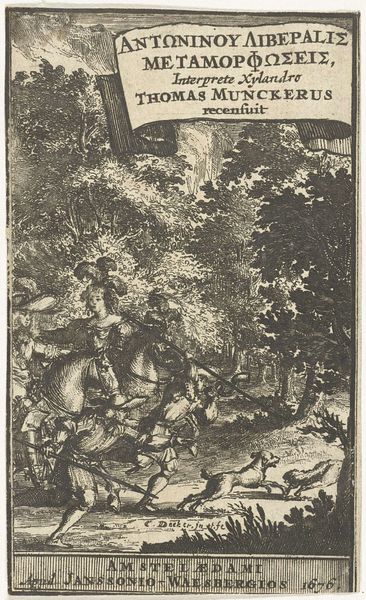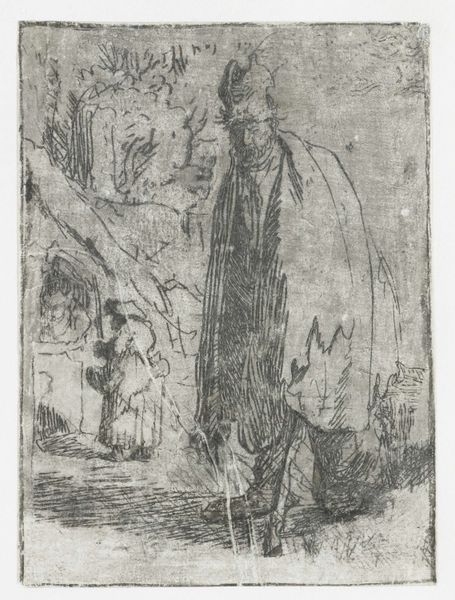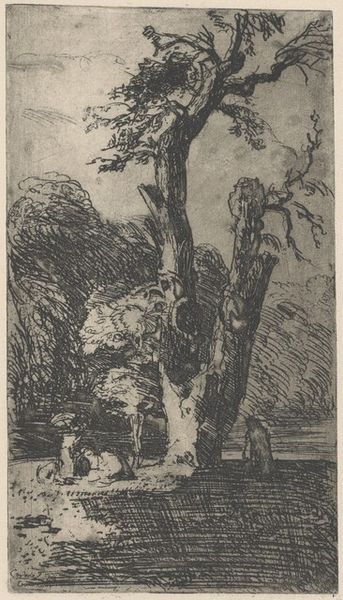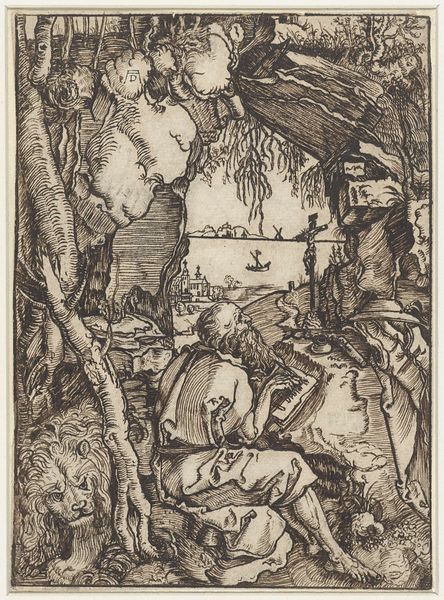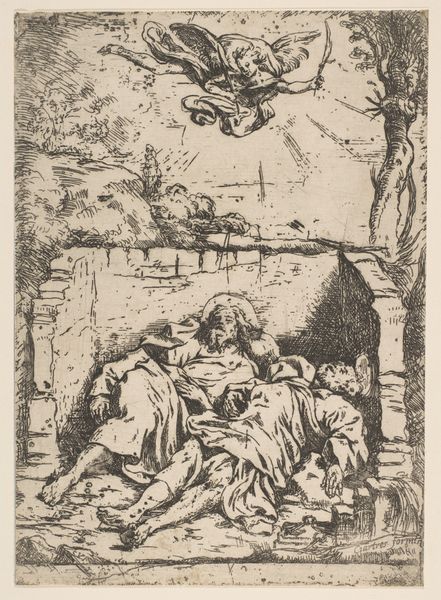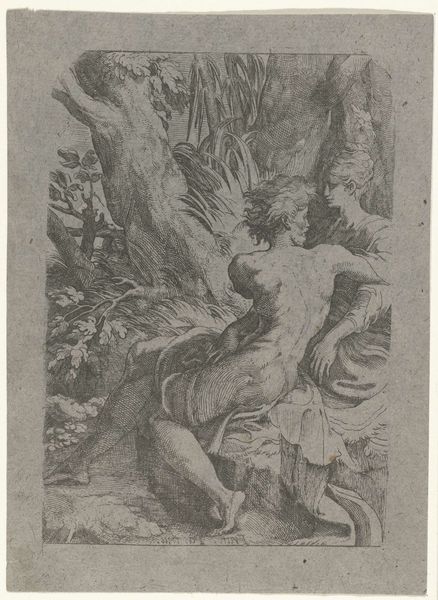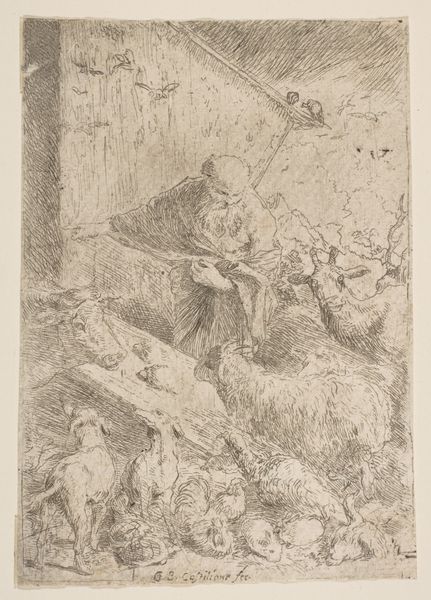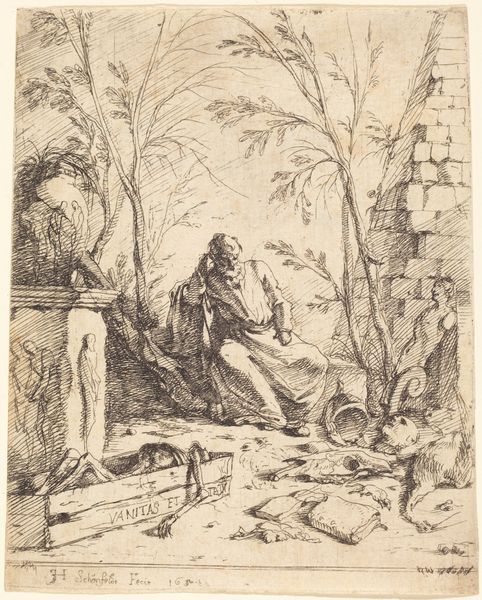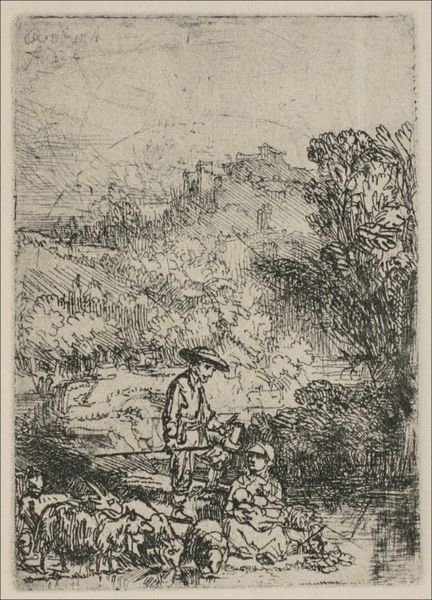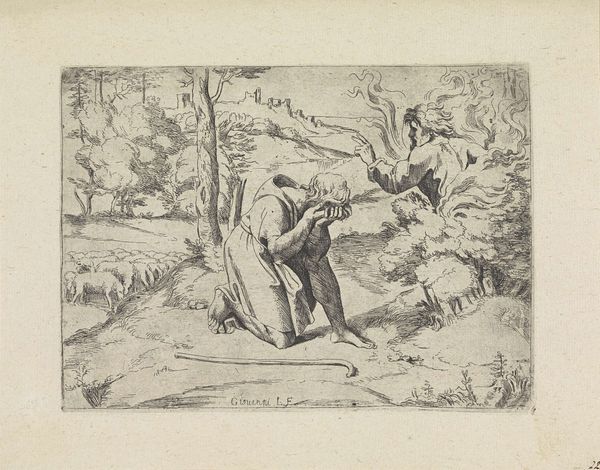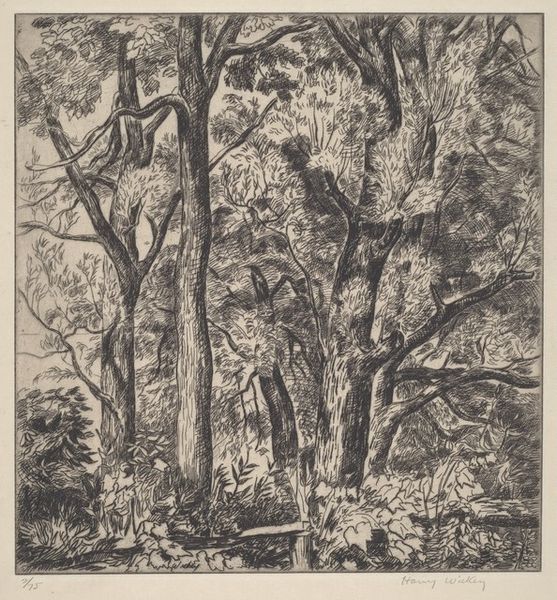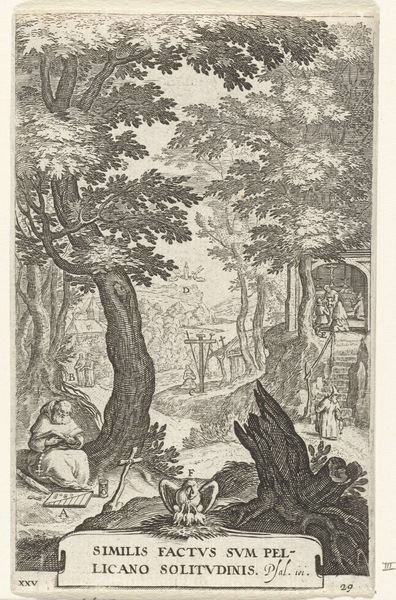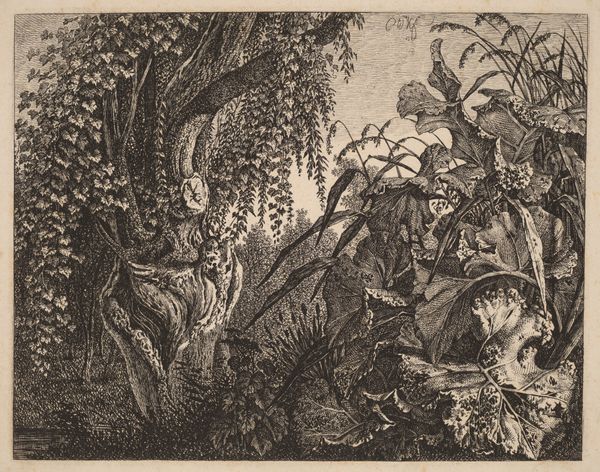
drawing, ink, pen
#
landscape illustration sketch
#
drawing
#
ink drawing
#
baroque
#
pen drawing
#
mechanical pen drawing
#
pen illustration
#
pen sketch
#
landscape
#
ink
#
ink drawing experimentation
#
pen-ink sketch
#
pen work
#
sketchbook drawing
#
pen
#
genre-painting
Dimensions: height 143 mm, width 110 mm
Copyright: Rijks Museum: Open Domain
Curator: Before us is "Rustende herder spelend op een hoorn" by Jonas Umbach, a pen and ink drawing housed here at the Rijksmuseum. The work probably dates somewhere between 1634 and 1693. Editor: It feels incredibly still, doesn't it? Despite the intricate details in the foliage and landscape, there's a distinct sense of calm. The lines create movement, but it is as if it’s all suspended, awaiting the next note from the shepherd's horn. Curator: Genre scenes like this gained popularity reflecting the changing socio-economic realities. As urban centers grew, the pastoral imagery evoked a yearning for a simpler, perhaps romanticized rural past. The art market really helped support this sentiment. Editor: The horn, of course, resonates across centuries as a symbol of nature, virility, and perhaps even a connection to Pan, the Greek god of the wild. The reclining shepherd with the animals and lush foliage brings the archetype full circle; his horn acts as both a musical instrument and almost a sacred artifact in the idyllic portrayal of his duties. Curator: Precisely. The very act of depicting the shepherd as "resting" is a fascinating detail. He's not actively laboring, which hints at leisure and contentment rather than the hardship that typically defined peasant life. It's the leisure classes defining how they want the working class to appear. Editor: Even his pose—leaning back, casually playing—suggests a harmony between man and nature, rather than dominance. The image avoids deeper engagement with economic actualities, showing, instead, a sense of personal belonging in the landscape. Curator: Though, the artist has perhaps romanticized his role for the tastes of wealthy landowners looking to put art in their homes, reinforcing particular social hierarchies. Editor: Ultimately, it's a picture deeply rooted in symbolism. And I see now that it isn't the social documentation I thought it might be, it’s intended instead to give the viewer a vicarious peace, if only for a moment. Curator: And, through its history of ownership and display, that vision of a calm pastoral existence maintains some relevance even today.
Comments
No comments
Be the first to comment and join the conversation on the ultimate creative platform.

